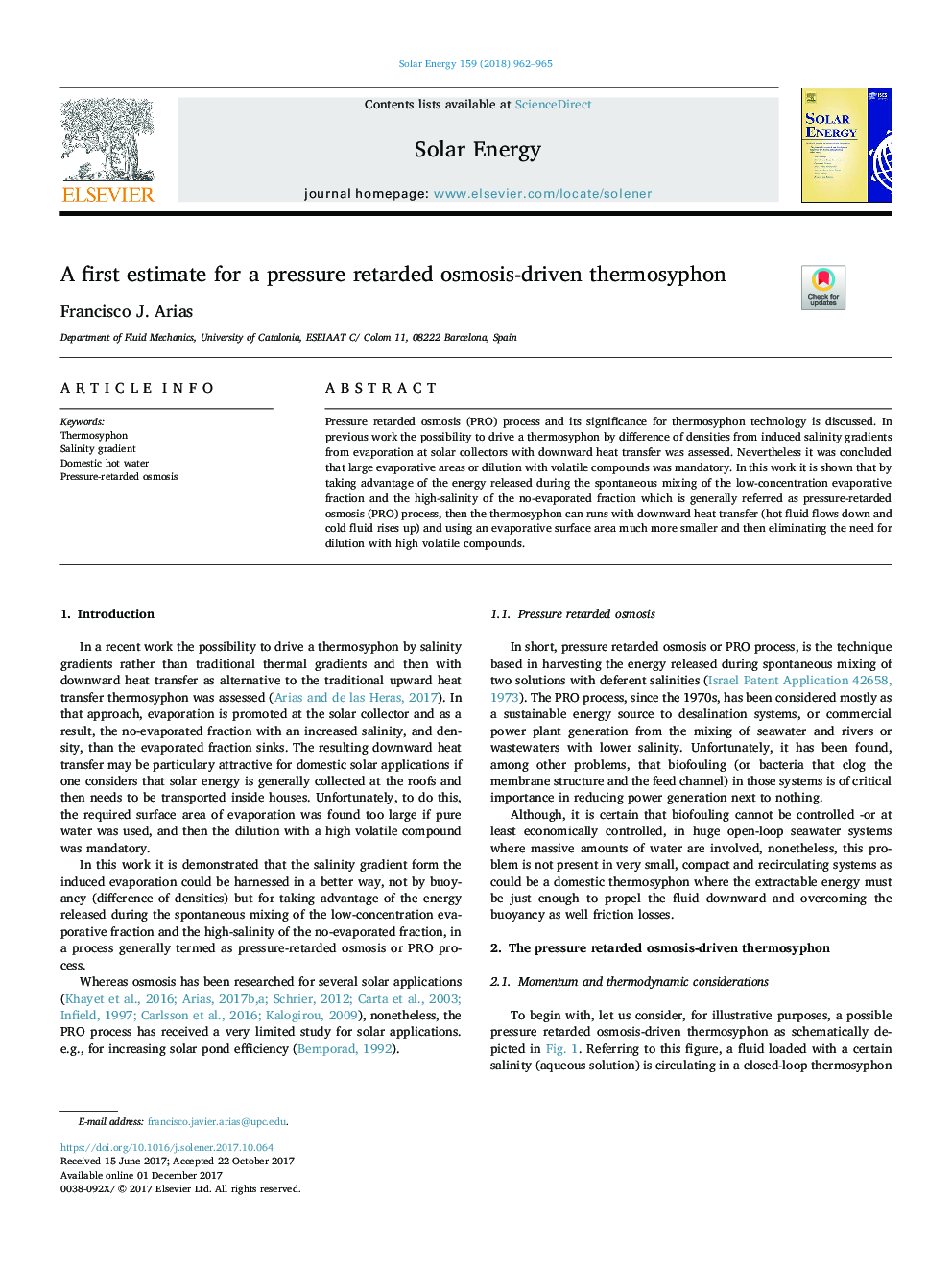| Article ID | Journal | Published Year | Pages | File Type |
|---|---|---|---|---|
| 7936172 | Solar Energy | 2018 | 4 Pages |
Abstract
Pressure retarded osmosis (PRO) process and its significance for thermosyphon technology is discussed. In previous work the possibility to drive a thermosyphon by difference of densities from induced salinity gradients from evaporation at solar collectors with downward heat transfer was assessed. Nevertheless it was concluded that large evaporative areas or dilution with volatile compounds was mandatory. In this work it is shown that by taking advantage of the energy released during the spontaneous mixing of the low-concentration evaporative fraction and the high-salinity of the no-evaporated fraction which is generally referred as pressure-retarded osmosis (PRO) process, then the thermosyphon can runs with downward heat transfer (hot fluid flows down and cold fluid rises up) and using an evaporative surface area much more smaller and then eliminating the need for dilution with high volatile compounds.
Related Topics
Physical Sciences and Engineering
Energy
Renewable Energy, Sustainability and the Environment
Authors
Francisco J. Arias,
